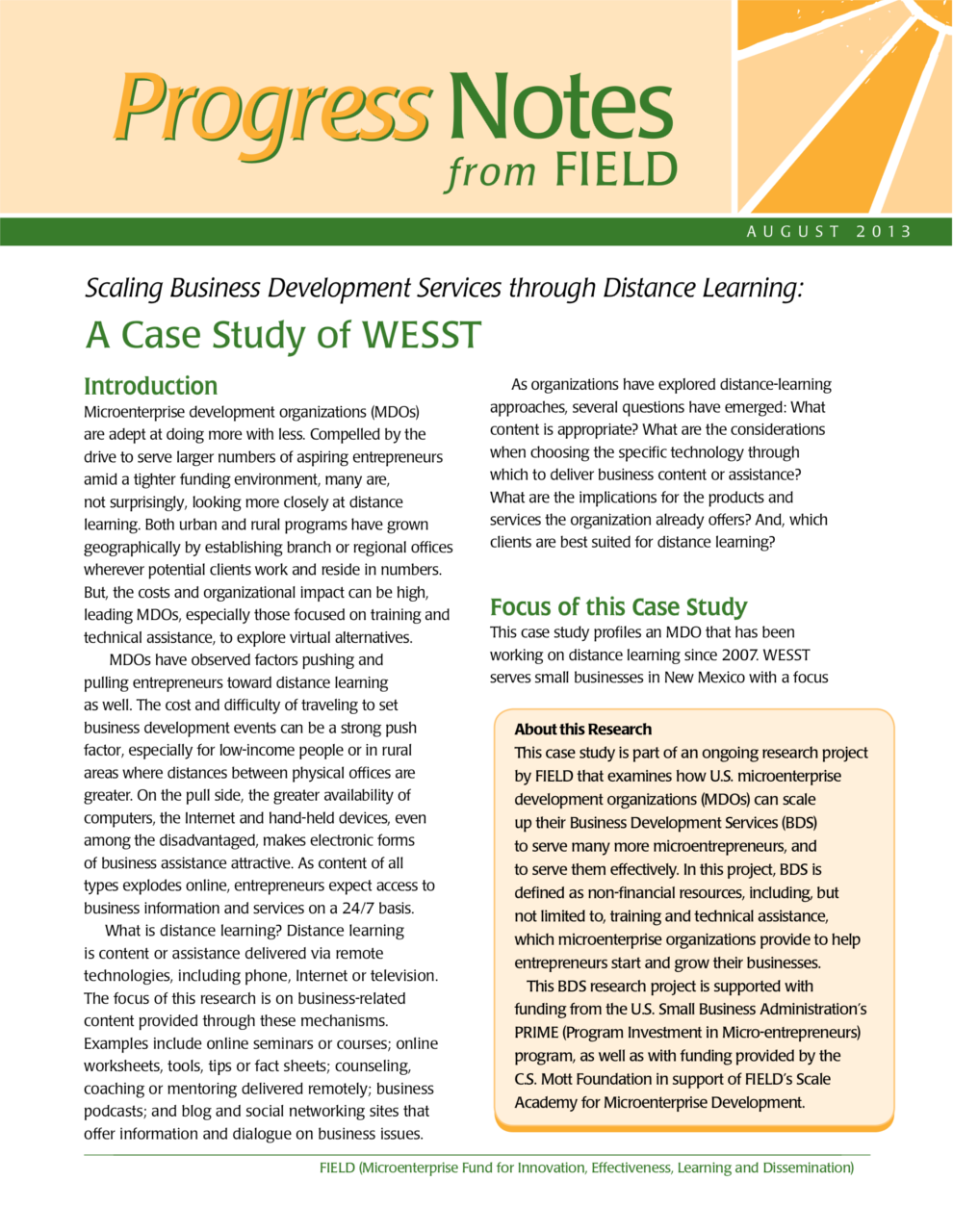Microenterprise development organizations (MDOs) are adept at doing more with less. Compelled by the drive to serve larger numbers of aspiring entrepreneurs amid a tighter funding environment, many are, not surprisingly, looking more closely at distance learning. Both urban and rural programs have grown geographically by establishing branch or regional offices wherever potential clients work and reside in numbers. But, the costs and organizational impact can be high, leading MDOs, especially those focused on training and technical assistance, to explore virtual alternatives.
MDOs have observed factors pushing and pulling entrepreneurs toward distance learning as well. The cost and difficulty of traveling to set business development events can be a strong push factor, especially for low-income people or in rural areas where distances between physical offices are greater. On the pull side, the greater availability of computers, the Internet and hand-held devices, even among the disadvantaged, makes electronic forms of business assistance attractive. As content of all types explodes online, entrepreneurs expect access to business information and services on a 24/7 basis.
What is distance learning? Distance learning is content or assistance delivered via remote technologies, including phone, Internet or television. The focus of this research is on business-related content provided through these mechanisms. Examples include online seminars or courses; online worksheets, tools, tips or fact sheets; counseling, coaching or mentoring delivered remotely; business podcasts; and blog and social networking sites that offer information and dialogue on business issues.
As organizations have explored distance-learning approaches, several questions have emerged: What content is appropriate? What are the considerations when choosing the specific technology through which to deliver business content or assistance? What are the implications for the products and services the organization already offers? And, which clients are best suited for distance learning?


